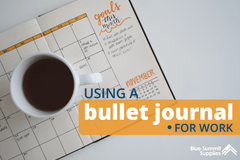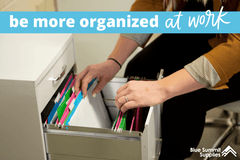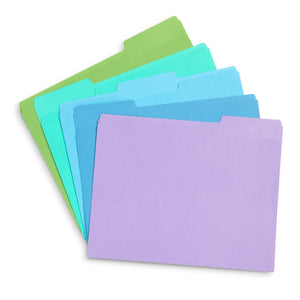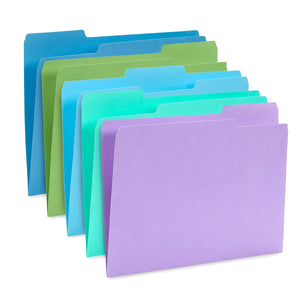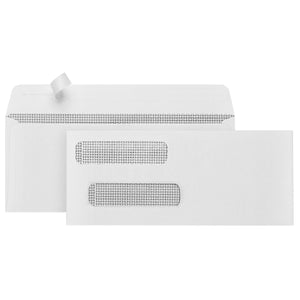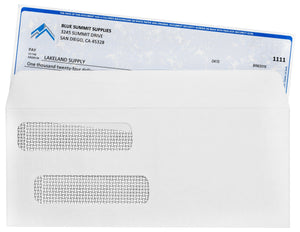Organizing your home office or work space can seem impossible when you don’t know where to start or which tools to get. We understand this frustration and outlined one option for combating workplace disorganization in our DIY home and office filing piece. But even armed with this guide on how to file, you might still be left with questions – questions like, ‘what kind of folder types do I need, exactly?’
It’s a valid concern, since when it comes to folders, options can be overwhelming. We’re here to remove some of the mystery from folders.
Check out our video about folder types, or keep reading below to learn more.
Here are some factors to consider before buying folders.
Durability
If you’re running an organization with files that need to last years and years, you’ll need a more heavy-duty folder than a student who only needs his folder to last a semester. When it comes to longevity, don’t go straight for the cheapest option. Instead, consider the materials used to make the folders. There are many options on the market, including laminated file folders and paperboard file folders. Plastic-based file folders will last longer but can be costlier, whereas paper-based file folders can be comparably sturdy if taken care of.
Consider, too, reinforced file folders versus standard file folders, and whether or not your folders have prongs. Make sure the prongs can withstand regular handling and use – if the metal is flimsy or the glue is weak, you might be replacing your folders more often than you’d anticipated.
Size
A common mistake when buying folders is ordering the wrong size. Before investing in file folders, make sure you’re getting the size that will fit your filing cabinet or file organizer. Letter and Legal file folders have different dimensions and shapes to correspond with Letter- and Legal-size paper. They will be slightly larger than the standard Letter- and Legal-size paper to best fit the paper within, as shown here.
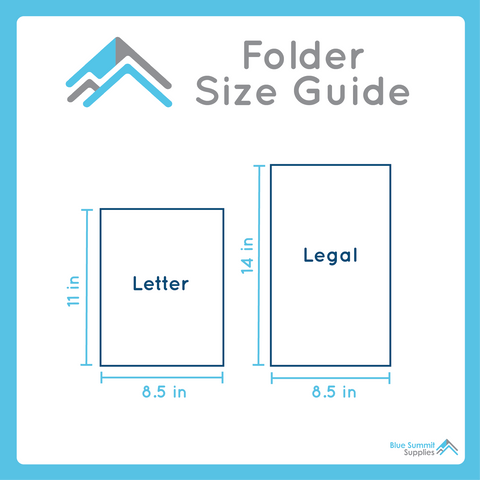
Volume
How many documents will you need to fit into your folders? Think ahead to the eventual volume of your folders before grabbing the first ones you see. Cheap file folders can be thin and might only hold a few sheets of paper, whereas expanding file folders and reinforced file folders can hold hundreds of pages.
Security
If you rarely need to access your folders, you probably don’t have to worry about keeping pages secure within them. However, if you’re someone who travels often with files full of documents or you run an organization like a medical practice with folders full of pages (many of them bearing sensitive information), you’ll want a folder that keeps its contents securely in place.
Color
Bright, uniquely colored folders can come in handy when setting up an organized filing system. Color-codable filing folders are available in all sorts of styles, from colored hanging folders to colored school folders with pockets. Certain colors, like orange file folders, may be harder to find than standard manila and can be much costlier than their plain counterparts, so do a quick search online before heading to the store.
Folder Tab Types
Folders used for any kind of filing have tabs that vary in placement, measurement, and usage.

Folder Tab Placement: Tabs are usually end tabs or top tabs. The top tabs come in varied positions, so you can more easily find your folders at a glance when they’re filed into a file cabinet. End tabs are the same and are great for storing folders vertically.

Folder Tab Sizes and Placement: Tabs aren’t all sized the same. Depending on your needs – like how much text you write on each tab – you will require a smaller or larger sized tab. Most commonly folders are cut with 1/3 tabs, though they are available in sizes all the way down to 1/12. The measurement – in this case, 1/3 – measures approximately 1/3 of the folder width, which makes it much wider than a 1/12 tab which measures approximately 1/12 of the folder width.

Reinforced Folder Tabs: Tabs can be plain paper or reinforced. Reinforced tabs are thicker and more durable than standard tabs, and are often either doubled in thickness or made out of transparent plastic to stand up to repeated use.

Folder Labeling Options: Most tabs come blank so you can write on them, though there are pre-filled in options for standard filing needs like ‘Invoices’ and ‘Employee Files.’ Tabs with inserts are made of transparent plastic and allow you to insert a tab label. Sometimes they are fixed and sometimes they are removable or repositionable, like on hanging file folders. They also make adhesive labels cut to the shape of your tab so you can write and stick without worrying about ruining your folder with ink.
So, you know what things to keep in mind when looking for the right file folders. Now what are the different types of file folders?

Fastener folder
Fastener folders keep your documents secure and held in place with long, flat prongs. These prongs are glued to the top of the folder with a strong adhesive. Fastener folders require pages to be hole punched at the top (or bottom) in order to thread the prongs through and hold pages in place.
All About Prongs
In fastener folders, prongs are either embossed or bonded.- Embossed prongs are threaded through the folder itself and kept in place by several smaller prongs.
- Bonded prongs have a reinforced section that is glued down with a strong adhesive to the folder.

Classification folders
Classification folders are created specifically to hold many documents relating to a single topic or person. These are most often used as patient file folders or for employee file folders, with dividers built in that allow for easy organizing and sorting. Prongs at the top of each section keep your folders secure, making them ideal for protecting sensitive information like personnel files.
From light blue to black, classification folders come in a wide range of colors, which makes organization simple through color coding. You can get either letter- or legal-size classification folders, boxes of small quantities or bulk classification folders, and a decent range of dividers within your classification folders. Most people prefer between 1 and 4 dividers, depending on your needs.

Hanging folders
When you have a cabinet or other filing container, one of the most space-savvy and quick-at-hand methods of filing is hanging folders. These folders are designed to hook into your filing system and slide back and forth, meaning you can rifle through hundreds of documents without having to upset their order.
The best hanging file folders have sturdy hangers that slide easily without catching. Colored hanging folders are helpful for at-a-glance organization within color-coded filing systems.
Bulk File Folders
If you run a decently-sized or large organization, you’ll likely need a lot of folders to hold many, many documents. Instead of buying your folders piecemeal, invest in an up-front bulk file folders purchase so you’ll always have what you need to keep information in order. This is also a cost-effective way to grab many folders at lower price points!
File Jackets
File jackets are an alternative to folders that keep stacks of documents safe in transport or around your office. File jackets come in a variety of colors just like folders, though unlike folders, they’re usually sealed on three sides with only one opening to slide papers in and out of. They’re designed to slide into hanging file folders so papers don’t slip out of the sides, and they make it much easier to grab several stacks of files from a file cabinet. They come in flat or expanded variants, so make sure you choose the ones that fit the expansion size of your hanging file folders for the best fit.

Hanging Your Hanging Files
When it comes to storing your hanging files, you have several options. They fit in most standard file cabinets with rails and space to slide, though you can also use them in end tab file cabinets, and portable or plastic hanging file boxes. They even have standalone hanging file folder frames that you can sit on your desk to see your files or store inside of cabinets and drawers that don’t come with hanging file folder rails.

Folders with Pockets
A favorite among students and professionals, folders with pockets are a useful way to keep several pages in place without having to hole punch them. Pocketed folders can be two-pocket or single-pocket depending on your needs, and come in all variants of durability, from plastic-based to paper-based. They come with or without prongs for 3-hole punched paper. Sometimes called ‘project folders,’ folders with pockets are popular for school use from kindergarten all the way through higher and continuing education.
Keeping Your Files Together, Wherever
If you take files on the go or need options for organization, expanding file folders and file wallets are two viable solutions.
Expanding file folders are accordion-like folders commonly made of plastic that have several inner pockets for holding your files. Many can hold hundreds of sheets of paper and a dozen or more files – larger ones can hold up to 3000 sheets. They adjust in size depending on how many files you slide into them, so they can be as slender or as bulky as you need. They usually have a clasp or other method of keeping the file folder securely closed, so the contents stay safe.
File wallets aren’t as generous with their sizing but are a sleek, secure way to transport documents. File wallets provide the capacity to hold multiple folders with the security of a protective flap. Most come with an elastic cord, Velcro, or other fastener to keep them securely closed.

Printable folders
If the options available aren’t what you’re after look-wise, consider DIY printable folders. You can make custom school folders, custom company folders – you can choose the paper (with or without your pre-printed design or logo on it) and print them out yourself, following whichever guidelines you’ve chosen to fold your folders up into the dimensions you need.
 For more informative articles about office supplies, subscribe to our email newsletter!
For more informative articles about office supplies, subscribe to our email newsletter!
Never fear, you won't begin receiving daily sales emails that belong in a spam folder. Instead, we promise a fun weekly roundup of our latest blog posts and great finds from across the web. And if you lose interest, it's always easy to unsubscribe with a single click.
For more information about organizing your office and office needs, check out our blog at Blue Summit Supplies. To contact us with questions (or just to say hi), reach out to Larry! She’d love to hear from you.






